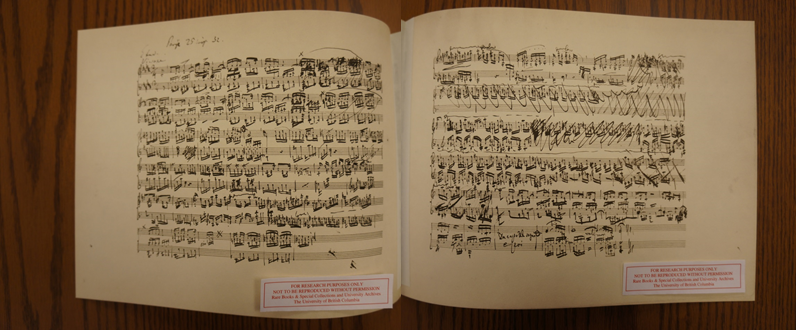The University of British Columbia’s Rare Books and Special Collections houses two identical facsimiles of Chopin’s Étude Op. 10 No. 3 in E Major autograph, produced and published by the Robert Owen Lehman Foundation in 1965[1]. The piece is reproduced via the collotype printing process to preserve an authentic feel similar to its original autograph. This copy is enclosed in a protective envelope with an additional insert specifying its limited print run, price and seller in English, French, German and Italian.
Note that this reproduced holograph (pictured above) has the composition date on the top left of the first page: “Paryz 25 sierp. 32” meaning Paris 25 August 1832. Consistent with this piece’s history, the tempo marking underneath is vivace ((It.) vivacious, fast and lively[2]). It is also interesting to consider the cr0ssed-out sections from this autograph and what ultimately did not make the final cut.
The reproduction of the 1832 autograph has caused some speculation about its origins. Hedley tackles two points of controversy concerning the authorship of the piece and its composition date[3]. The first addresses a legend that the piece was composed with the help of Chopin’s friends and publishers. There is, however, no evidence for such a claim, and what we know about Chopin’s character supports this[4]. The second concerns its composition date. This precisely-dated autograph handwriting is comparatively different from previous autographs under Chopin’s name. Hedley suggests that since the handwriting on Étude Op. 10 No. 3 is continuous with Chopin’s succeeding works in the next 17 years and that the previous so-called autographs should instead be rejected[5].
[1] UBC’s RBSC
[2] The Concise Oxford Dictionary of Music: vivace, vivacemente
[3] Hedley 31
[4] Hedley 31
[5] Hedley 31
